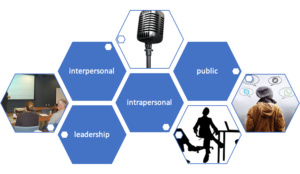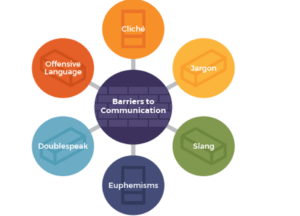Effective Communication Practices
Verbal Communication Practices
Why Invest in Improving our Communication Skills?
Since communication is a natural and common occurrence one may think that there is little to no reason for improving the way we interact with others. however, investing the time and effort into improving our communication skills will make a marked difference in at least four areas;
- Reduce potential conflicts.
- Reduce misunderstandings.
- Improve engagement.
- Improve productivity.
Further, the Industry Training Authority as well as the Canadian Apprenticeship Forum has identified communication skills as an essential skill for not only apprentices looking to pass their endorsement exams, it is also an essential skill for life.
“Plumbers require good oral communication skills to interact with colleagues, apprentices, supervisors, suppliers, inspectors, clients, and other tradespersons when co-ordinating work, resolving problems and ensuring safety.” – Red Seal Essential Skills Outline, Plumber (2016).
Types of Verbal Communication
There are essentially two types of categories of verbal skills. Interpersonal and Leadership types. These two main categories can be divided into four sub-categories;
Intrapersonal – intrapersonal communication is a communicator’s internal use of language or thought. It can be useful to envision intrapersonal communication occurring in the mind of the individual in a model which contains a sender, receiver, and feedback loop.
Interpersonal – interpersonal communication is the process by which people exchange information, feelings, and meaning through verbal and non-verbal messages: it is face-to-face communication. It is here where we see the proper application of using questions to seek clarity as well as the acting of switching. Switching can be broken down into two components. The first is referred to as conversational switching, where a speaker’s attitude toward the topic is conveyed to the recipient. The second is referred to as situational switching where the speaker’s attitude towards the audience is communicated.
Public – public communication happens when individuals and groups engage in dialogue in the public sphere in order to deliver a message to a specific audience. Public speaking events, newspaper editorials, and billboard advertisements are a few forms of public communication.

Leadership – is defined as inspiring and encouraging an individual or a group by systematic and meaningful sharing of information. It is here where we find elements of persuasion and negotiation being used by the speaker. Another form can be described as group talk. Group talk sees the speaker exchanging words like ‘we’ or ‘us’ for the singular forms ‘I’, ‘you’. Employing this kind of communication is designed to make the group effective by being more inclusive and focused on the group’s actions rather than upon particular individuals.
These four categories constitute the building blocks of effective verbal communication.

Barriers to Understanding
As with all communication, there are obstacles to ensuring that what the speaker intends to communicate is actually understood and then enacted. The following is a list of some common barriers in verbal communication.
Encoding – Decoding[1]
In basic terms, humans communicate through a process of encoding and decoding. The encoder is the person who develops and sends the message. As represented in Figure 1.1 below, the encoder must determine how the message will be received by the audience and make adjustments, so the message is received the way they want it to be received.
Encoding is the process of turning thoughts into communication. The encoder uses a ‘medium’ to send the message — a phone call, email, text message, face-to-face meeting, or another communication tool. The level of conscious thought that goes into encoding messages may vary. The encoder should also take into account any ‘noise’ that might interfere with their messages, such as other messages, distractions, or influences.
The audience then ‘decodes’, or interprets, the message for themselves. Decoding is the process of turning communication into thoughts. For example, you may realize you’re hungry and encode the following message to send to your apprentice: “I’m hungry. Do you want to go for lunch soon?” As your apprentice receives the message, they decode your communication and turn it back into thoughts to make meaning.
Semantic Confusion, Jargon, and Slang[2]
In the past when you have used language to make sense of your experiences and to take part in discussions, you no doubt came to see that language and verbal communication could work for you and sometimes against you. Language allowed you to communicate, but it also allowed you to miscommunicate and misunderstand.
In an article titled “The Miscommunication Gap,” Susan Washburn lists several undesirable results of poor communication in business:
- Damaged relationships
- Loss of productivity
- Inefficiency and rework
- Conflict
- Missed opportunities
- Schedule slippage (delays, missed deadlines)
- Scope creep…or leap (gradual or sudden changes in an assignment that make it more complex and difficult than it was originally understood to be)
- Wasted resources
- Unclear or unmet requirements

- Cliché – cultural references that often make no sense in other cultures. For example, “A cliché is something to avoid like the plague, for it is nothing but a tired old warhorse, and if the shoe were on the other foot you too would have an ax to grind.”
- Jargon – An occupation-specific language used by people in a given profession. Jargon does not necessarily imply formal education but instead focuses on the language people in a particular profession use to communicate with each other.
- Slang – The use of existing or newly invented words to take the place of standard or traditional words with the intent of adding an unconventional, nonstandard, humorous, or rebellious effect. It differs from jargon in that it is used in informal contexts, among friends or members of a certain age group, rather than by professionals in a certain industry.
- Euphemism – Involves substituting an acceptable word for an offensive, controversial, or unacceptable one that conveys the same or similar meaning.
- Doublespeak – The deliberate use of words to disguise, obscure, or change meaning.
- Offensive Language – Some language is offensive and has no place in the workplace. It may even be a violation of company policy.
Each of these six barriers to communication contributes to misunderstanding and miscommunication, intentionally or unintentionally. If you recognize one of them, you can address it right away.
Strategies to Help Improve Your Communication Skills
Preparation
When you have to communicate to others in the field or when you are tasked with going to the wholesaler, you must take some time to prepare what you are going to say. A simple starting place would be to think through what you are going to ask or say and then writing down some notes to help you if you can’t remember the content of your message.
Choose Carefully
We have to remember to choose our words and sentences carefully. As we have already covered, there is a multitude of potential barriers to communication. Taking the time to prepare leads to the need to choose your words and phrases carefully so that the barriers can be minimized or neutralized altogether.
Clarity
The next step in improving your communication skills is to seek clarity. Both as the sender but more so as the receiver or listener. As the sender, it would be important to stop and ask the one who is listening if they have any questions or concerns about what you just said. As the listener, it is even more important to ask questions of the sender if there is any hint of doubt in your mind regarding what was just communicated.
Tone
Often the tone in our voice will communicate deeper meaning to what we are saying. Being aware of your emotions in the moment of communicating will help to minimize any interference that your tone may indicate. For example, one may begin to raise their voice as they talk about a specific method of performing a trade task. The receiver may interpret this as anger, anxiety, frustration, or contempt. When in fact the sender may simply be excited to share what they have learned or discovered and there is no intention of communicating the previously mentioned emotions.
Avoid Distractions
Avoiding distractions like technology or your immediate surroundings is imperative when communicating information. When one is distracted while trying to communicate, they can miss important pieces of the message, or negatively affect the level of importance of the topic being discussed. As the listener, it is even more imperative that you place your focus on the one sending you information rather than trying to divide your attention between the sender and your technology. If you are distracted while you are listening you may miss some important information that will make performing / completing your task efficiently and effectively.
Concise
Being concise in your communication means that you stick to the content of your message and minimize or eliminate any tangents that will distract the listener from what you are trying to say. Being concise will greatly help those listening to the message understand more clearly, and perhaps ask better questions so that the core of the message is clearly understood.
[1] eCampusOntario; Communication for Business Professionals. 2018. https://ecampusontario.pressbooks.pub/commbusprofcdn/
[2] eCampusOntario; Communication for Business Professionals. 2018. https://ecampusontario.pressbooks.pub/commbusprofcdn/
the Skilled Trades refer to professional occupations that involve working with your hands and require specialized training.

